Business Review organizes the fifth Foreign Investors’ Summit, which will bring together the main foreign business communities for a series of panels, dedicated workshops and keynote speeches in a bid to map Romania’s business future.
With a GDP increase of 7 percent in 2017, Romania is poised to remain among the European Union member states with the highest economic growth rates in 2018 as well. Moreover, after taking over the presidency of the Council of the European Union in the first semester of 2019, Romania will be in a position to make its mark on the global stage.
The local economy has remained on the radar of foreign investors resulting in fresh inflows of around EUR 4.5 billion in 2017. This figure is set to remain rather constant this year, according to analysts. In the Ease of Doing Business report of the World Bank, Romania was ranked 45th out of 190 global economies surveyed, ahead of fellow EU member states such as Italy, Hungary and Bulgaria.
Moreover, multinational companies have continued to create jobs and invest in local operations, while also supporting a burgeoning network of smaller firms as suppliers, which, in turn, created business opportunities for local entrepreneurs. Against this backdrop, Business Review organizes the fifth Foreign Investors’ Summit, which will bring together the main foreign business communities for a series of panels, dedicated workshops and keynote speeches in a bid to map Romania’s business future.
LIVE TEXT COVERAGE – DAY 1
Welcome to the 5th Edition of Foreign Investors Summit
Ionut Georgescu – CEO | FWEI & Partner | Business Review
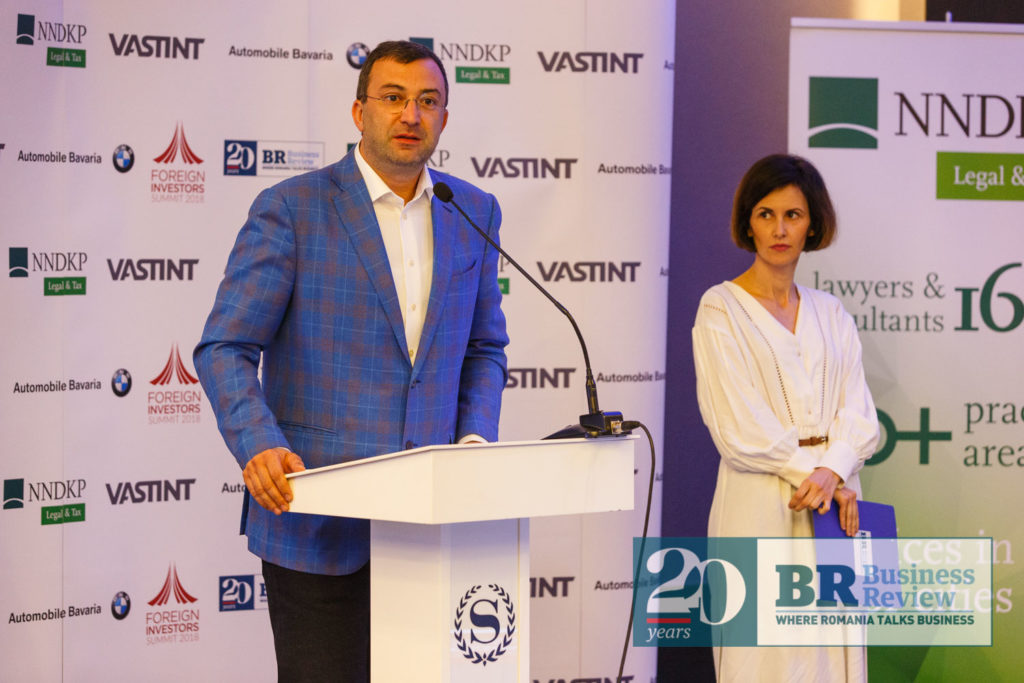
- This year, BR celebrates 20 years of supporting foreign investors in Romania
- In 1990, Romania discovered capitalism, democracy and private property, as well as the risks and opportunities of entrepreneurship
- Foreign investors have brought experience and education that has helped us evolve as a society in the past 30 years
- Now, BR wants a new commitment: in the following 20 years, we want to support Romanian entrepreneurship, which must have the courage to go outside the country’s borders and prove its potential on external market
- We see how young people are leaving the country – we should create an institutional framework that would allow young people to stay in the country but have a global thinking – we should support young people, their values and their leadership
- We’ve all made mistakes, but there’s always value in learning, so we shouldn’t be afraid of making mistakes because we think mistakes will be punished
- We shouldn’t blame the system or the country for our failures – we should follow the model of US entrepreneurs who take their fate into their own hands
Keynote Speech
Thomas Lubeck – Regional Manager for Central & Southeastern Europe | IFC
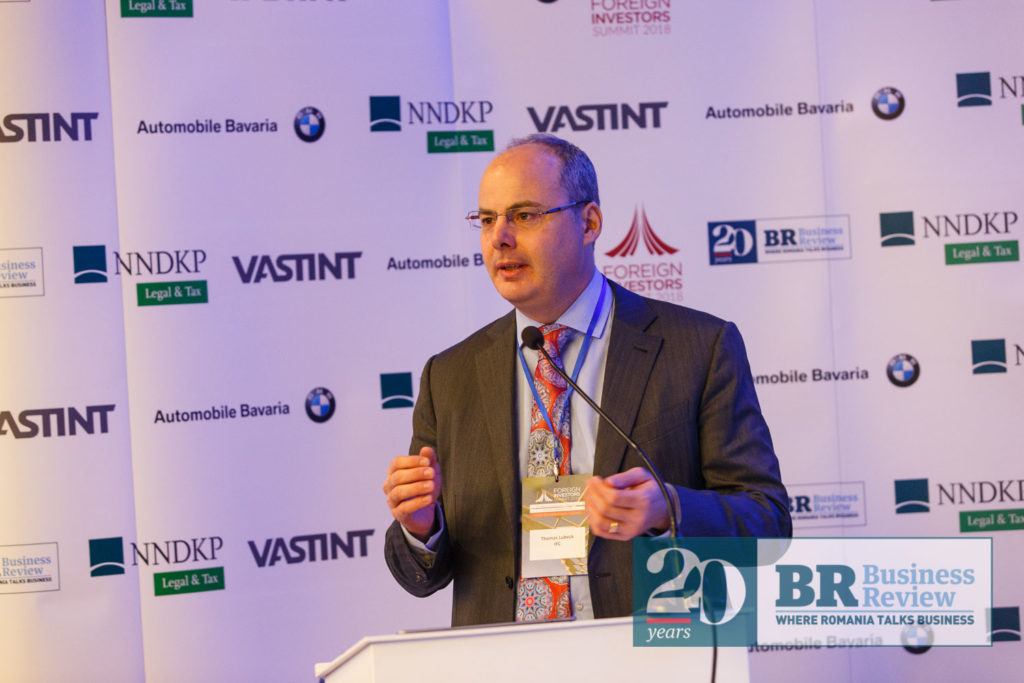
- IFC is the part of the World Bank Group that focuses on private sector development – when people think about WB they think of a large, monolithic institutions doing large investments with governments – in fact, it’s 5 different institutions focused on different things
- Where we’ve been in Romania and where we see opportunity for foreign investments
- When I come here, I feel there’s some cynicism in the market about what more can be done – but from my perspective, Romania is booming
- Our current investment pipeline – around EUR 140 million, and quite diversified
- Over the past 25 years IFC has made progress providing private sector support here in Romania, in several important sectors
- Economic growth, one of the best in Europe – the government did a decent job in managing the aftermath of the global financial crisis
- A lot of recent growth has come from investment into consumption and less into infrastructure
- Social and economic changes brought about by the EU accession
- 1 percent of the biggest companies in Romania make up over 60 percent of the total national turnover
- Widening gaps between the rich and poor – two different pictures of Romania – one in Bucharest and one outside it, where incomes are much lower
- The frequent changes in fiscal code and lack of consistency in the rule of law are causing difficulties
- Problem in getting goods across the border –
- We all know about the global Transport Masterplan developed by the government in the past years to get Romania’s infrastructure to European standards
- What we plan to do is take a closer look at this and find out whether there’s updates needed with the numbers and try to work with the govt to close this gap – the obvious source is with the EU structural funds – leaving free money on the table is really unfortunate – that should be the first priority – a lot of money is available from institutions like EIB and the World Bank, plus a lot of expertise
- The next part, from institutions like IFC or EBRD is finding ways to see whether the private sector can be brought in to meet some of these gaps
- Recent progress with the PPP law, very applicable to infrastructure – a potentially very good vehicle to get things moving in infrastructure – we’ll try to see which sectors might be good for such private sector involvement
- Sustained growth will require addressing these supply-side constraints and strengthening institutions
- Sometimes, progress is not linear but we do what we can to offer support
Panel Discussion | Harnessing Romania’s growth future

Lukasz Olszewski – Head of Business Development CEE, Turkey and Greece | S&P Global Ratings
- Regional footprint – if we look at the CEE region as a whole, it’s quite diversified in terms of investment ratings – from A+ to BBB-
- There is great interest from investors from places like Japan in the whole region – they see it as a very stable, predictable region
- Poland had better EU funds absorption, better entrepreneurship and being the biggest market in Europe
- Polish companies have started to expand their operations beyond the borders
- Investing in education, trying to get people to stay here and develop businesses, to see the local market as an opportunity

- Blue collar workers are needed – when I was young, we had technical schools that no longer exist and people need to bring such workers from countries far, far away
- The key is to invest in education – when you educate the blue collar workers they’ll be able to adjust to the modern economy and find their place
- Structural reforms take time – Poland introduced them a while ago and I’m a good example of that – I lived abroad for over 10 years and then decided to come back because the quality of life in Poland increased and the level of opportunity went through the roof compared to those developed countries. More and more people, once they reach a certain stage in their career, want to return to their homelands – this could be the case for Romania, which is currently experiencing a brain drain – to get those people back, those structural reforms are necessary – investing in infrastructure, education and healthcare is essential.
- What I’ve seen in Poland happen more was that there was a lot of push from businesses and people on the ground who motivated the government to act accordingly with businesses.
Cristian Nacu – Senior Country Officer for Romania & Moldova | IFC
- I think the situation has changed a little bit from 5-10 years ago, when I was hearing the same things – now, we’re in a unique situation in the entire region or even in the world – there are a lot of funds available – the country is able to access all kinds of funding from free money like EU funds to all the money available from international institutions like IFC, EBRD, EIB, etc. – they all have money to spend in the region.
- Romania is flooded by funds – the bad news is we don’t know how to use them – and that’s a paradox for Romania
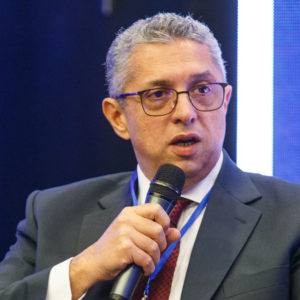
- We’re now lacking human capital, and that happened because we neglected education and health for many years. Salaries have grown so that’s not a reason why people are leaving. Many private entrepreneurs are willing to pay even higher salaries in order to get better people – but people are leaving for a better standard of life, better education, better rule of law – unfortunately, these are much more difficult to fix now.
- We have to focus on being able to produce people who will want to stay here and participate in what we have to do – there’s a lot to do and we also have the means available.
- I urge representatives from the private sector to get more involved in politics
Florin Godean – Country Manager | Adecco Romania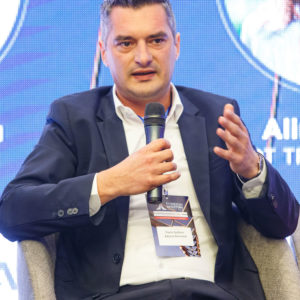
- People are unable to adapt to companies they work at – because HR has to forecast what will happen in the near future and convince management about what to do to keep people in the company
- The market is changing and we have to adapt our companies, our industries and that’s how we keep our people onboard
- People from outside the EU are of course welcome, but let’s try to bring in people with higher education – those coming in now, low-skilled, are covering the problem we have today but they won’t be able to solve the problem we’ll have in the future
Laurian Lungu – Economic Advisor | FIC & Co-Founder | CPAG
- FIC has developed a platform called VaUrma
- FIC considers that Romania has the potential to become EU’s 10th largest economy by 2036. Any long-term project needs a vision
- Three main pillars to sustain growth over the next 20 years: infrastructure, human capital and private and public sector increased efficiency
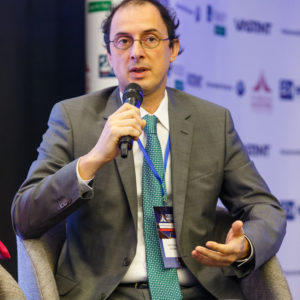 You need capital, labour and productivity to increase output
You need capital, labour and productivity to increase output- We looked more into detail at specific numbers and did projections for GDP for all EU members – essentially, all the three pillars have three sub-pillars
- If you start to invest in one of the pillars today, the payoff comes in ten years
- Romania has one of the worst efficiencies in capital spending in Europe
- In education, Romania’s lagging far, far behind
- What we are missing with EU funds is that we don’t have the infrastructure in place and the experts. These skills have to be rebuilt
- Romania needs to build in institutional infrastructure to attract EU funds
Alina Andrei – Founding Partner at Cabot Transfer Pricing
- There is a dialogue with the Finance Ministry and a taskforce among Romania’s business environment – we keep making proposals but unfortunately we don’t see them applied in practice
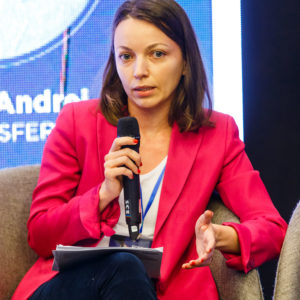 We’ve made a proposal to the ministry to improve legislation for R&D and encourage companies to invest in R&D as we can gain a competitive advantage over other EU countries
We’ve made a proposal to the ministry to improve legislation for R&D and encourage companies to invest in R&D as we can gain a competitive advantage over other EU countries- You cannot hire people from outside the EU in Romania unless you pay them the average wage – there are pros and cons to changing this law – maybe a solution would be to focus on the industries that are worst hit by the lack of skilled workforce
- The perspective is to move to east. I had a client 5 years ago who said it was moving to Iasi, not Timisoara or Cluj. 10 years ago the flat tax and very cheap labor force was enough for investment, now it’s not an incentive that much.
Moderator – Prof. Dr. Jörg K. Menzer – Partner, Head CEE Offices | Noerr
Keynote Speech
Alejandro Hajdenberg – Resident Representative for Romania & Bulgaria | IMF
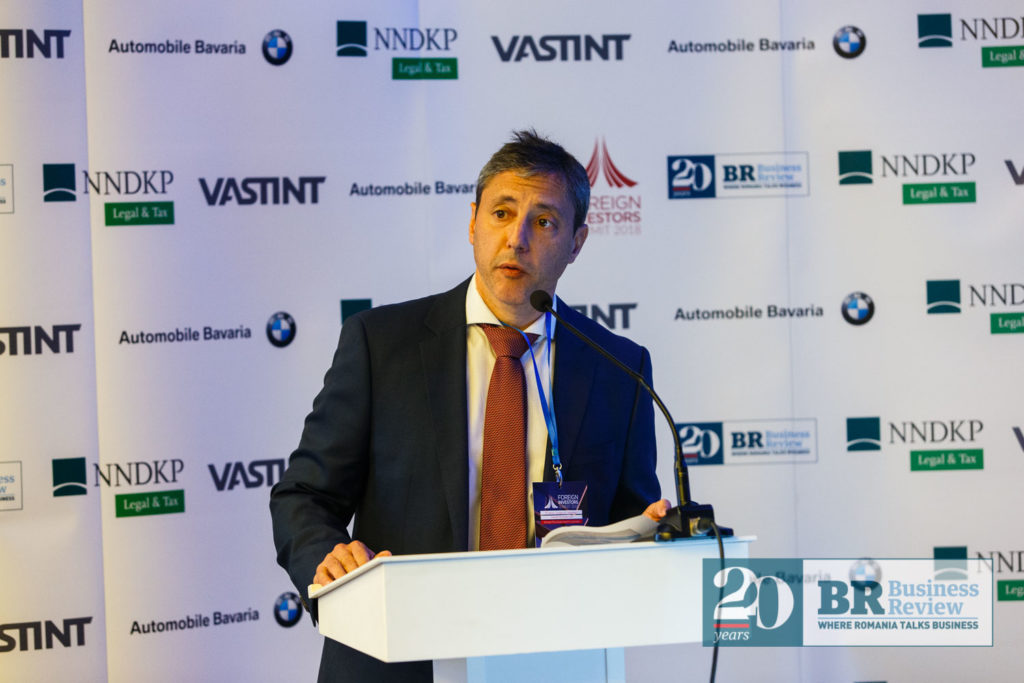
- Growth in 2017 was second-largest in the EU, mostly driven by private consumption but also to some extent by private investment
- At the same time, it was fueled by fiscal relaxation, rapid wage increases and a favourable external environment
- In the first half of 2018, economic growth has slowed and reached 4 pct in first two quarters
- We’re seeing that this growth has resulted in some signs of overheating of the economy – on three main fronts
- First, labour market: rapid wage increases and record low unemployment – growth of employment has reached levels prior to financial crisis – wage growth mostly in public sector, but partly also in private sector
- Inflation level has risen significantly – now down to 5 percent but still above target of central bank – due to external factors like energy prices but also reflecting strong growth of domestic demand
- The strong economic growth and domestic demand, which has surpassed the growth of economic activity has resulted in a deterioration of the current account balance and trade deficit
- On a positive side, the funding of the deficit has been good, mostly through non-direct flows like foreign investments and EU funds
- Large fiscal relaxation – the largest in Europe over past 3 years – fiscal deficit Romania in 2017 was second-largest in EU
- Separately, a deterioration in the composition of the budget
- The deterioration is pro-cyclical – the fiscal deficit has increased when the economy was growing rapidly, which is not usually expected. Usually, when the economy grows the fiscal deficit also improves
- We’ve also seen a large decline in tax revenues – this reflects significant cuts in taxes, especially VAT but also others, also reflects inefficiency in collection by the administration
- We will have a mission visiting Romania next week to assess the economic outlook and make suggestions for future development
- For the medium term, we’re predicting growth will remain around 3 percent
- Inflation will converge to the top end of the central bank’s range by the end of the year and will then remain within the range for the medium term
- Current account deficit will remain broadly stable on the medium term
- Deficit – 3.6 pct of GDP, above target of the government and the EU – we’ll assess whether there are measures to decrease the deficit by the end of the year
- Based on current policies, we’re also predicting deficit will remain above 3 percent in the next year
- Risks: external and domestic
- On the external front, the world economy is slowing down and so is the European economy – the main risk is changing market sentiments towards emerging markets
- The business cycle is maturing and major central banks are normalizing their monetary policies and this will affect the sentiment towards Romania
- Risks also related to trade – trade tensions related to US-China/US-EU disputes are generating uncertainty
- Domestically, main risks are further deterioration of fiscal policy and weakening domestic institutions
- This is a good period, when we should prepare for worse times – we want to protect these buffers
- Romania’s preparedness for bad times is deteriorating – external current account has deteriorated and fiscal deficit has also increased
- Public debt could rise to 50 percent of GDP in the following years
- We emphasise the need for predictability of policies and increasing the medium-term orientation of policies – so private sector can make consumption, saving and investment decisions
- Improving the mix of macroeconomic policies
- Re-energizing structural reforms to alleviate constraints on growth
- Preserve and deepen progress on rule of law
- We estimate that by improving efficiency on tax collection, revenues could increase by 2.5 pct of GDP
- The quality of public infrastructure in Romania is quite weak, so public investment management institutions should be strengthened
- Room for improvement in absorbing EU funds – Romania is not fully using the funds available – Romania’s GDP could increase by 10 pct by 2022 if absorption increases to 95 percent
- PPPs need to be adequately designed and implemented and make the right choices in implementing a project – whether directly through public funds or through PPP
- Sovereign Investment Fund – an initiative by the govt to shift the ownership of SOEs to a separate fund – we advise that this fund needs to be managed according to the best international practices – transparency, auditing, management selection, etc.
Panel Discussion | Eyes on the future. Ways to enhance Romania’s attractiveness as an investment destination

Radu Constantinescu – Managing partner | Qualitance
- We started as a small company and did outsourcing for big companies and we then extended this business and found a connection in Silicon Valley
 At that point we realised that we still had a lot to learn, even though our business was 5 years old
At that point we realised that we still had a lot to learn, even though our business was 5 years old- We understood that it’s not just engineering capabilities that are important but also imagining what tech products would look like
- We got ourselves some advisors from the US and Romania and started a learning journey – how to scale up business and create things that have impact, and integrated a UX and design company from Silicon Valley and brought more value to our clients
- I see engineers looking to build products in Romania
- I look what can we do from small companies, bottom up; In other countries, the state creates premises for these small companies to succeed.
- Big development centers made a great job to keep engineers here
- In our case, we invest a lot in blockchain and AI. We see medtech as a big area.
Serban Roman – Vice President, Country Director | Enterprise Investors
- There are several sectors driving our economic growth and we see some healthy growth in consumption in some export-driven industries
- We’re a private equity fund, meaning we provide equity capital to companies – either to acquire shares or accelerate the expansion of companies by providing capital increases – almost 150 companies in 8 years – a good track record in this regard
- There are several nice companies who grew to dominate their markets and this created opportunity – not sure how many of them will attract people from outside, but they’ll create a lot of traction and growth within the country
- Romania’s entrepreneurial class is not as developed as neighbouring countries’ because our more brutal history – it’s much younger, but still very powerful
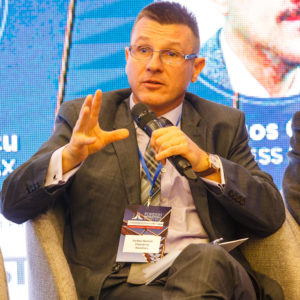
- There’s a lot of money in the market and entrepreneurs don’t always know what to do with the money – most of the projects we see today are entrepreneurs who want to sell their businesses – this shows that we’re not ready to conquer the region, the world – the problem of Romanian companies is usually that the founder is also the manager so it’s normal for them to be tired
- There are more opportunities for IT young guys to stay into the country and create something here
- There are sectors which are attractive and will look attractive – all these export-driven, B2B, production and retail. Other sectors like construction and infrastructure should come.
- There is opportunity to grow in each sector in Romania
- Automation has a predictable cost compared to the cost of the workforce in Romania
Daniel Heymann – General Manager | Dräxlmaier Group, Brasov, Romania
- We have one side the production side and the large interior development center.
- Sometimes we have huge troubles to get our people in the plant due to the poor infrastructure.
- We have over 15,000 people in Romania and we are one of the biggest employers in Romania. We are believing in Romania and it’s a good country.
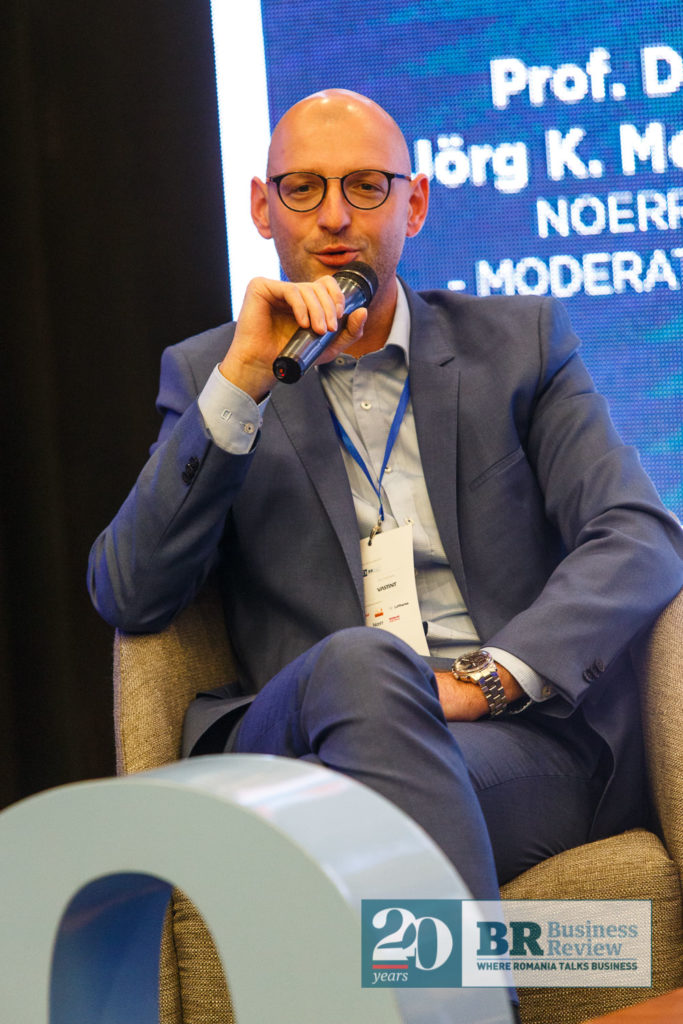 Just in the last 6 years, we invested just in Brasov, in building, some EUR 60 million.
Just in the last 6 years, we invested just in Brasov, in building, some EUR 60 million.- From our development point of view, we are getting good people where the universities are. Unfortunately, exactly these people are quickly moving in other lands. He said that some of these young people are moving to other car producers abroad.
- We are having factories that are doing the full capacity and full products, all of our portfolio and technology from international level. Our need for technical people is constantly growing. Aside from the workforce, the challenge is to train the people – keeping them here is the hard challenge and it’s not just the salary.
- In Brasov, we are the first to do the dual education system like in Germany. We are growing our own people.
Sebastian Popescu – Financial Advisor & Auditor | Noerr Finance & Tax
- The state aid launched in Romania about 10-11 years ago worked well.
- In the last years, state aid has become more familiar and more companies know about it. The state aid is granted by national authorities.
- Popescu explained that each member state can choose the structure of the state aid.
- “Romania chose to grant free cash in comparison to other countries such as Hungary or Poland that have more complex state aid mechanisms,” said Popescu.
- On companies eligible for state aid, it doesn’t matter if you are an SME, a large company, or a start-up. The investment threshold for this year to apply for state aid is EUR 3 million.
Dragos Cabat – Managing Partner | RisCo Business Intelligence
- Romania now is very divided between large cities such as Bucharest, Iasi, Timisoara and the rest of the country. We have a large IT infrastructure in these large cities. The rest of the country has huge problems, other areas have poor infrastructure and people that are not very well trained.
- Although we see an economic growth of more than 7 percent in 2017, which is strange and stupid, we didn’t increase our sales revenue in line with that.
- We need to solve the division in Romania between the poor and the rich and the community of young smart IT community and the rest of the country.
- Foreign investors are very optimistic about Romania. They are optimistic, but too many Romanians are going to work abroad. We can’t expect the government and state policies to make them stay. The only ones that can do this are the foreign investors.
 Moderator – Prof. Dr. Jörg K. Menzer – Partner, Head CEE Offices | Noerr
Moderator – Prof. Dr. Jörg K. Menzer – Partner, Head CEE Offices | Noerr
Panel Discussion | Investing in tomorrows’ workforce. Companies’ involvement in education and training programs
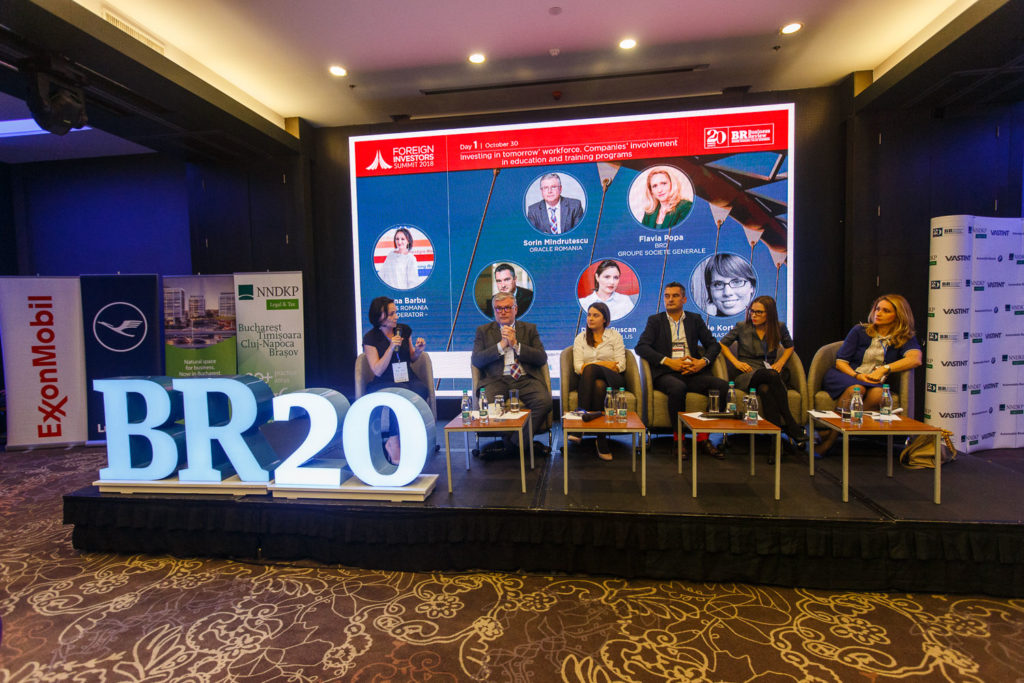
Sorin Mindrutescu – Country Manager & Central and Eastern Europe Cloud Leader | Oracle Romania
- It’s not our duty to educate. It’s the duty of schools to educate students and keep up with economic development and the related elements.
- Romania has very interesting and also paradoxical phenomena going on.
- There are many Romanians who haven’t even made their departure official and the truth is there are about 5 million Romanians abroad.
- Oracle Academy upgrades school curricula to better prepare students – we are able to do a better job than universities – but this upgrade seems to be going on against the will of some of the teachers
- Companies’ involvement in the educational system is very strong, and NGOs also have a significant contribution that helps the state system keep up with technology, teaching methods and so on.
- Private education is not a good alternative to state education like the private health system is a good alternative to the public health system in Romania.
- As I’m involved in many initiatives, I feel like the private or NGO sector is practically taking over the social role of the public sector, even though I don’t think this should happen.
- We have a dedicated education department – Oracle Academy has 600 institutions, 1,275 teacher, 49,000 students, we’re involved in supporting IT and Physics olympiads, we sponsor three different competitions involving 1,200+ students, 20 universities, five cities where our employees train students. The project was started 12 years ago and hundreds of thousands of students and teachers have been involved one way or another
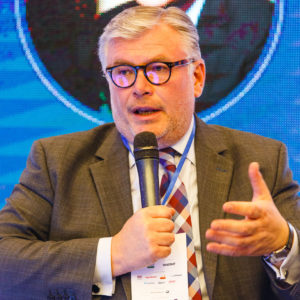
- What happens with children at the end of an educational cycle – the issue with learning today is somewhat strange – they’ll continue to learn for the rest of their lives since some jobs they’ll work in don’t even exist yet.
- Public policymakers should take into account the democratization of innovation – five years ago, you would need a lot of money to open a new company – now, everything is in the cloud and you only need a few thousand euros.
- Kids are starting their own companies and it’s wonderful that they’re doing this – this also has an impact on education
- I’ve never stopped anyone who has left my company to go work in a startup or start their own company – that’s because this involves a dream, and that’s something we should all support.
- The mix of Romanian workers’ foreign language and technical skills is great
- Soft skills – they are able to follow rules and procedures in a creative way and this is a big advantage
- We’re a sexy place to be thanks to our EU membership
Florin Godean – Country Manager | Adecco Romania
 Graduates’ traceability is non-existent in our system – universities have no idea where their students go after they graduate
Graduates’ traceability is non-existent in our system – universities have no idea where their students go after they graduate- Companies first came to Romania due to the low costs, but things have changed – the manufacturing sector is increasingly turning into something with added value, with an R&D component
- I haven’t seen investors with a large number of employees coming to Romania in recent years. Many big companies continue to develop as they have a privileged position on the market, but smaller companies are having a harder time.
Swantje Kortemeyer – Head of Economic Section | German Embassy in Romania
- Part of my job is to speak to the German businesses in Romania and I travel across the country – one of their main headaches is the lack of skilled workforce – some of them have gotten involved in vocational training programs
- German companies in Romania have invested on a long-term basis – we want Romania to prosper and continue on this path of success in a sustainable way
- We have a pilot project to provide support to the educational system
- The output of the education system needs to meet the demand of the economy only through a collaboration between the system and the companies – companies need to get involved and this helps them recruit the staff they need, while the pupils get technical knowledge and the soft skills they need, to allow them to find jobs later on.
Daniela Buscan – Program Director | Academy + Plus
- My personal experience – in a market where the IT industry is more or less the third GDP contributor; in a market where the growth predictions for 2020 in the IT industry reach EUR 6 billion from today’s EUR 3.5; where IT specialists are literally hunted – we decided to open a special training academy for the IT industry.
- We opened in 2014 and since then we’ve integrated over 350 people in the core IT business – but we haven’t managed to find financial support for our project – we’ve transferred costs to companies and offer specialized training specifically for those companies.
- A month ago, we put a break on the programme – we still can’t find support.
- So, maybe the current state of the educational system is enough.
Flavia Popa – Secretary General | BRD Groupe Societe Generale
- We’re having difficulty finding new employees for our 7,000+ staff company.
- We care about this issue – our futures are at stake – our children, even our pensions
- We have enormous potential – in 2016, for example, an association proposed to us a program involving a robotics competition – we accepted the proposal and created the BRD First Tech Challenge, which involves children across the country – from 70 to 132 highschools, from 800 to 2,000 students. Romania’s team won gold at the international robotics competition
- We’ve met some teachers and students who have managed to form teams, build incredible robots and win competitions – their enthusiasm is huge.
- Children gain skills in programming, communication, teamwork, science, etc. We’re delighted to see that this wave of creative energy exists everywhere, even in small towns, which gives us a lot of hope.
- Teachers can make all the difference and we need to focus on them, too. There are many across the country who have the gift of teaching and doing amazing things, but we need to do our duty and help them as much as possible.
- People in Romania have an urge to come up with ideas – I see this in students and entrepreneurs who come up with fantastic ideas in a short amount of time
Moderator – Oana Barbu – General Manager | ASBIS Romania
Panel Discussion | Romanian cities growing into regional champions
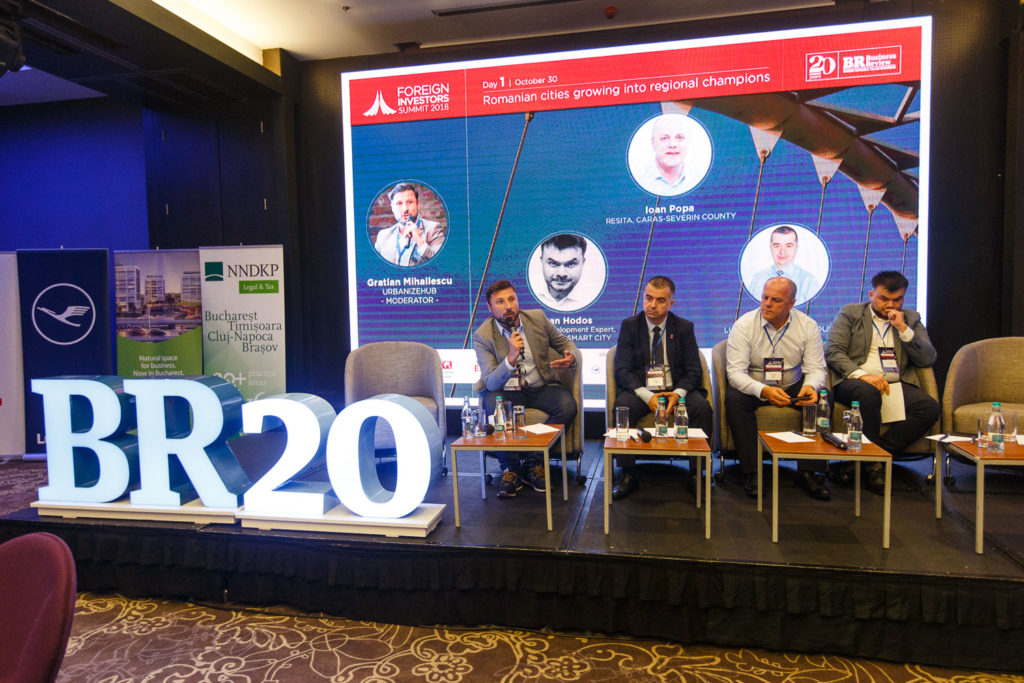
Dan Hodos, Urban Development Expert, Alba Iulia Smart City
I am a product of the private sector and recently joined the public administration, focused on urban development.
At Alba Iulia we have a young team, newly formed. The most important asset for the reconstruction of the country is the human resource.
The brand manual of Alba Iulia was developed in the past years and now we are implementing it. The smart city should have 11 verticals for development, including components for the social life and the quality of life.
We have 73 smart city solutions that are developed in several stages.
In Romania smaller cities are more advantaged because it is easier to implement a smart city project. At present, there is the time for small and medium-sized cities to grow.
Ioan Popa – Mayor | Resita, Caras-Severin County
I’ve been an entrepreneur for 25 years. Many entrepreneurs look at the state with suspicion. It’s not a general concept and we can’t perceive it as a whole. The city halls are the owners of all education institutions, up to universities.
We purchased 406 new computers this year for the schools.
 We want more vocational classes in school. For 246 years, Resita has been producing steel and developed the engines of the naval fleet in Romania. It has a powerful experience in the industry.
We want more vocational classes in school. For 246 years, Resita has been producing steel and developed the engines of the naval fleet in Romania. It has a powerful experience in the industry.
I’m trying to revive Resita, which has faced depopulation after the closure of two large plants.
We have 1,000 people employed in the industrial area. He said more information can be found on investinresita.ro.
The Eftimie Murgu University has more than 2,500 students in engineering, business. We have a dual school, with 260 students. The school is developed in partnership with the private sector. The accommodation and meal costs for the pupils are covered by the municipality. In this way, the city attracted more students from the neighboring communes.
Another advantage of the city, aside from the dual school, is the amount of local taxes. Resita has a tax rate of 0.6 percent for land and buildings of companies, the lowest level in the country.
We have a lot of brownfield, abandoned industrial field. We have 15 hectares of land linked to utilities and another land of more than 30 hectares, where we are talking with Immochan for the development of a mall and we also want to develop an aqualand.
An area of 60 hectares, of brownfield, is in the middle of the city and is ready to receive investments of all kind.
Resita has 76,000 inhabitants and a bazin of 300,000 inhabitants on a 50 km radius. The unemployment rate is 6 percent. There is available human resource.
I have acted as a manager and wanted to see in what stage of development was Resita. I did a survey because I wanted to see why people left the city and how they could return. We have prepared projects worth EUR 150 million – we are looking to develop the network for a tram.
Stefan Ilie – Mayor | Luncavita, Tulcea County
We have 4,500 inhabitants and the locality is located some 55 km from Tulcea. The investors are not coming if you don’t have infrastructure. He said that the budget of the locality grows only if you have investors and then mayors can afford to build the infrastructure.
The only resource we had was the EU funds, we didn’t have a team. I looked for young and more experienced people to build a team and develop EU-funded projects. I tried to find them in Luncavita. I have a team of 12 people working to attract EU funds.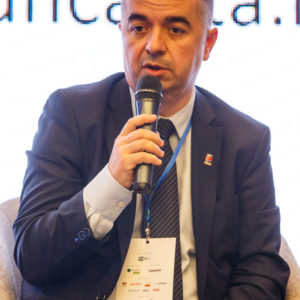
We have attracted EUR 20 million worth of private investments, mainly in the agriculture field. We addressed also smaller businesses and together with schools we have retrained many inhabitants who also started their own companies.
By attracting private investors, the town hall also raised funding to co-finance investments. We have attracted EUR 11 million and we have contracts for investments worth EUR 24 million in roads, extending the water infrastructure, we developed a tourism infrastructure, a lot of revenue being collected in taxes.
In 2010, we became the first locality in Romania which had the option to pay taxes online. The team wanting progress is very important.
Moderator – Gratian Mihailescu – Founder | UrbanizeHub
Medium and small cities and localities will become engines of the local economy


:quality(80)/business-review.eu/wp-content/uploads/2018/10/IMG_4457-e1540893717688.jpg)

:quality(80)/business-review.eu/wp-content/uploads/2024/04/cover-april.jpg)




:quality(80)/business-review.eu/wp-content/uploads/2024/02/IMG_6951.jpg)

:quality(80)/business-review.eu/wp-content/uploads/2024/04/COVER-1.jpg)



:quality(50)/business-review.eu/wp-content/uploads/2024/03/coperta-BR-BAT.jpg)
:quality(50)/business-review.eu/wp-content/uploads/2024/03/br-print-march.jpg)
:quality(50)/business-review.eu/wp-content/uploads/2024/03/br-print-feb.jpg)
:quality(80)/business-review.eu/wp-content/uploads/2024/04/cover-april.jpg)
:quality(50)/business-review.eu/wp-content/uploads/2024/04/WhatsApp-Image-2024-04-25-at-3.30.13-PM.jpeg)
:quality(50)/business-review.eu/wp-content/uploads/2024/04/Irina-Peptine_Schneider-Electric-scaled.jpg)
:quality(50)/business-review.eu/wp-content/uploads/2024/04/Cisco-report.jpg)